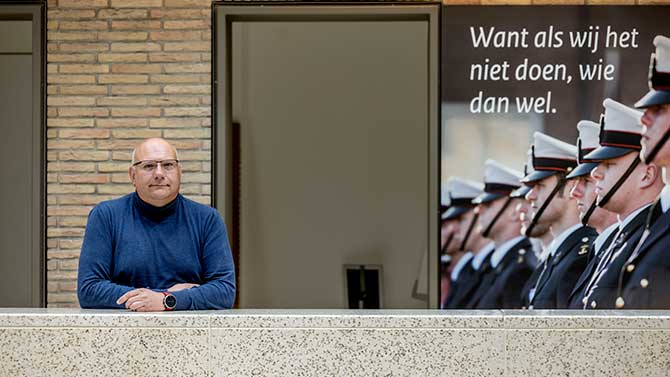
Ministry of Defence is transforming to inpire and retain talent
René Kreeftmeijer is the director of personnel policy at the Ministry of Defence. Having held various HR positions within the organisation for almost 25 years, he is ideally placed to talk about the transformation on which he is currently working in the field of HR, diversity & inclusion (D&I) and technology. ‘After starting out as a business administrator in the army, I’ve experienced every aspect of the HR field and seen many changes over the years.’
Kreeftmeijer and his HR colleagues found that the Ministry of Defence had been struggling on a structural basis for years with a large number of vacancies. 'Defence long had a system whereby we tell what we need based on all sorts of criteria. But times have changed. A mind shift is taking place. Many employees, for example, wish to use their talents and ambitions in part-time roles or be free to switch to something completely different later on. The fact that you need to be able to deal with this as an organisation may seem obvious, but that wasn’t the case at Defence.'

René Kreeftmeijer (director of personnel policy at the Ministry of Defence)

Holding up a mirror
Kreeftmeijer sought support and advice on the subject from PwC expert Bastiaan Starink. 'We were lacking the knowledge and capacity within HR and I’ve known PwC for some years since the company helped us with some complicated pension calculations. I called Bastiaan when we were working on the transition in HR and needed help resolving several issues. This ultimately resulted in the HR transition and, amongst other things, the PwC-developed Inclusion Insights programme.' Designed to help organisations with their D&I challenges, the pilot of Inclusion Insights will start soon at the Royal Military Police.
'PwC is supporting Defence with formulating and translating policy into concrete changes with and within the Defence units. They’re also helping us with stakeholder management. PwC doesn’t only give advice; they also hold up a mirror so that we can see what’s going well and what could be improved. In my opinion this is a textbook example of a strategic partnership.'
Retain, bind and inspire
Kreeftmeijer says that while interest in Ministry of Defence vacancies is quite high, the organisation has been unable to convert this into actually retaining, binding and inspiring people. 'Although we’ve tried many action plans, none have brought about the desired structural change. Someone who works for our cyber organisation, for example, has different talents and interests than a colleague in the airborne brigade. Our response, therefore, needs to be differentiated and more customised.
To continue with this example, we loosened the testing and selection requirements for future cyber personnel and were able to fill the unit in no time as a result. The commander of the cyber unit at the time simply went around the country, telling the unit’s story, directing people through the process and then appointing them. An unorthodox approach for Defence but it worked and that was an eye-opener. We aim to offer greater diversity in propositions by listening to what people want and finding out which competencies they have.
Our TV ads were often about operational actions, featuring physically and mentally strong people. Although such employees are obviously vital to Defence’s primary task, our needs are broader and there’s room for other talents and ambitions. We recently started a new campaign called Generation D which takes a different approach with a core message of ‘Tell us what you want, what you can do, and report to us’.'


Maintaining the human dimension
A lot is going to change at Defence in the future with technological developments making the playing field much wider. 'Conventional means will remain valuable but become less labour-intensive. Other systems will emerge and there is, for instance, an increasing attention on cyber warfare. These kinds of changes will place different demands on people. Strategic personnel planning is used to map out what an organisation like Defence needs, which tasks it has to perform, and which employees align well with these tasks.'
Kreeftmeijer believes Defence should never lose sight of the human dimension, despite all the technological developments. 'This is an area that definitely requires attention. Instruments and techniques will never be able to replace personal attention and they need to be linked. Personal attention is essential when forming and developing individual colleagues and units.
That said, it’s also important to stay in touch with all the different target groups – from academics to combat soldiers – and to enter into a dialogue on their future development. How do you treat people and how do you offer a perspective that not only attracts new recruits to Defence but keeps them there? This will be an exceptional challenge in the years to come.
Contact us


Daniel de Jager
Client Lead Partner, Ministerie van Defensie, PwC Netherlands
Tel: +31 (0)65 575 87 57

















